When it comes to gardens, everyone has their own opinion on what makes a great one. Some people love sprawling gardens with a variety of plants and flowers, while others prefer something more minimalist with just a few choice plants. No matter what your preference is, there are some tips that can help you when writing about your garden. In this blog post, we will discuss how to describe your garden in a way that captures its essence and makes readers want to visit!
What is a garden?
A garden is a place where plants are grown, typically for ornamental purposes. Gardens may be designed by professional landscapers, hobbyists, or amateurs. There are many different types of gardens, including public parks, private yards, and community gardens. [1]
What does a garden symbolize?
A garden is often seen as a symbol of life, growth, and abundance. In many cultures, gardens are also seen as a place of refuge and relaxation.
What is a description and example?
There are many reasons why someone might want to write about a garden. Maybe they have fond memories of spending time in their own backyard garden as a child.
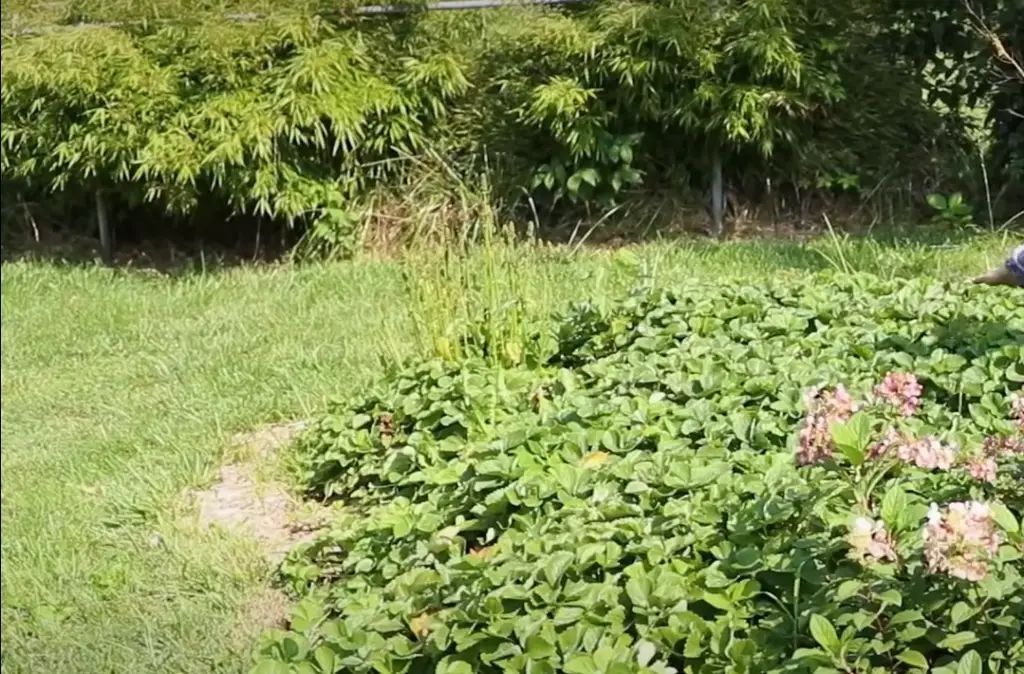
Or maybe they find the process of gardening therapeutic and calming. Whatever the reason, writing about a garden can be a fun and rewarding experience. [2]
What is a description and example?
A description is a word or phrase that describes someone or something. An example of a description is the word “blue” which describes the color of the sky. When writing about a garden, it is important to choose descriptive words that will help paint a picture for the reader. Here are some tips for writing about your favorite outdoor space:
Think about what makes your garden special and unique. Is it the plants you have chosen? The layout? The way the sun hits it at different times of day?
- Make a list of all the things you love about your garden.
- Look at your list and choose the three most important aspects of your garden. These will be the focus of your description.
- Now, it’s time to start writing! Begin by describing the overall feeling or atmosphere of your garden. Is it peaceful? Relaxing? Inviting?
- Next, describe the three elements you chose as the focus of your description. Be sure to use plenty of adjectives and sensory details. For example, if you are describing the flowers in your garden, you might say: “The brightly colored flowers are arranged in neat rows and they smell sweet.”
- Finally, wrap up your description by giving a general overview of the rest of the garden. What else can be found there? A pond? A fountain? A gazebo?
By following these tips, you will be able to write a garden description that will transport your readers to your outdoor oasis!
What’s the quickest way to summarize your description in a few words?
One way to do this is to focus on the five senses: what can you see, smell, hear, taste, and feel in the garden? This will give your reader a well-rounded picture of the space. For example, if you’re describing a rose garden, you might say that it’s full of beautiful blooms in shades of pink and red. You might also describe the sweet fragrance in the air, or how the petals feel soft to the touch.
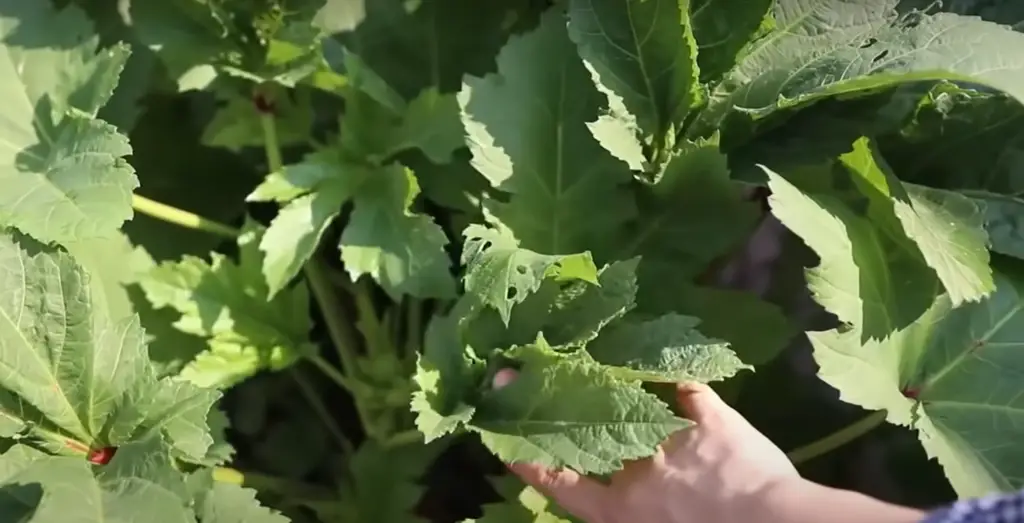
Another tip is to use strong adjectives to really bring your descriptions to life. Instead of simply saying that there are flowers in the garden, try using words like “abundant,” “lush,” or “colorful.” This will help paint a vivid picture for your reader.
Finally, don’t forget to describe the overall mood or feeling of the garden. Is it peaceful and serene? Playful and whimsical? Romantic and enchanting? Use your words to transport your reader into this special place.
What are creative words?
Assuming you want tips for writing about your favorite outdoor space:
When describing a garden, try to evoke as many senses as possible. What does it look like? Is the grass green or brown? Are there flowers or trees? What type of flowers and trees? How tall are they? What does it smell like? Is there a particular fragrance that reminds you of the garden? What does it sound like? Is there a waterfall or fountain? Birds chirping? Kids laughing? What does it feel like? Soft grass beneath your feet or prickly stones underfoot? Warm sun on your skin or cool shade from the trees overhead. The more senses you can engage, the more real the garden will feel to your readers. [3]
What is a juicy sentence?
A juicy sentence is one that is full of sensory details and concrete images.
When you’re describing your garden, try to use as many juicy sentences as possible. Describe the way the sun feels on your skin, the smell of the flowers in the air, and the sound of the bees buzzing around you. The more vivid your descriptions, the more likely it is that your readers will be able to imagine themselves in your garden.
Here are a few tips to help you write juicier sentences:
- Use lots of adjectives. Adjectives are words that describe, and the more adjectives you use, the more detailed your description will be.
- Use concrete images. Instead of saying “I feel so peaceful in my garden,” say “I feel like I’m in a different world when I’m in my garden.”
- Use all five senses. In addition to using adjectives to describe what you see, also use adjectives to describe what you hear, smell, taste, and feel.
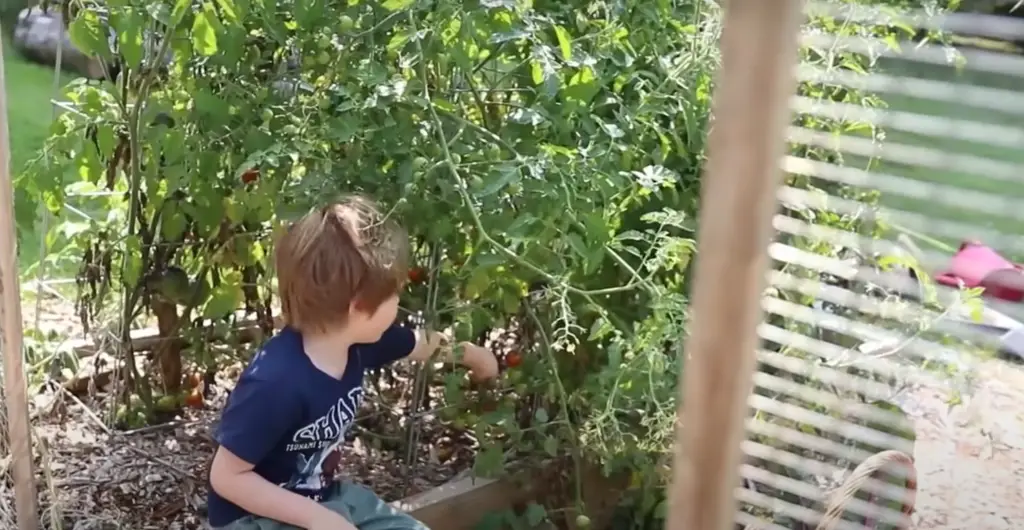
By following these tips, you’ll be well on your way to writing juicier sentences that will make your readers feel as if they’re right there in your garden with you. [4]
Memorable Words to Describe Your Garden:
When you’re writing about your garden, you want to choose words that will create a lasting impression on your reader. Here are a few tips to get you started:
- Think about the five senses: What do you see, smell, hear, taste, and feel in your garden? Describing these sensory details will help create a vivid picture for your reader.
- Choose colorful words: A garden is a great opportunity to use some of those more unusual words you’ve been wanting to try out. Go ahead and unleash your inner poet!
- Be specific: Rather than saying “the flowers were beautiful,” try describing exactly what you saw: “The tulips were a deep red, with delicate petals that looked like they had been painted by a master artist.”
The more specific you are, the easier it will be for your reader to imagine being in your garden. [5]
Writing About Flowers In A Descriptive Style
When it comes to describing a garden, there are endless ways to do so. You can go the scientific route and describe the types of flowers present. Or, you can take a more creative approach and use adjectives to paint a picture with your words. No matter which route you choose, there are some tips that will help you write about your favorite outdoor space in a way that does justice to its beauty.
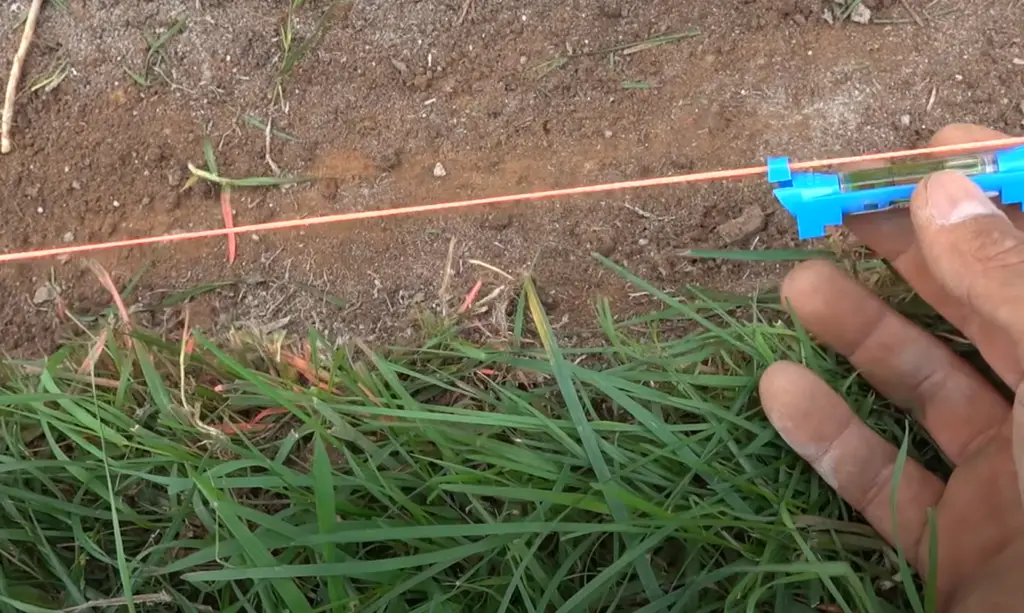
If you’re going for a scientific description, start by researching the different types of flowers that are in your garden. Make note of their Latin names as well as any common names that they might have. Once you have all of this information gathered, you can start writing your description. Start by listing the different types of flowers and then move on to describe their appearance.
If you’re going for a more creative description, start by brainstorming a list of adjectives that you feel accurately describe your garden. Once you have your list, start writing sentences that incorporate these words.
Use words that describe both the physical appearance of the garden as well as its smell, sound, and feel.
What Your Garden Smells Like
One of the most important ways to describe your garden is through its smell. This can be tricky, as different smells evoke different memories and feelings in different people. However, if you can find the right words to describe the scent of your garden, you’ll be able to transport your readers into your outdoor space and give them a true sense of what it’s like.
To get started, close your eyes and take a deep breath in through your nose. What do you smell? Is it fresh or earthy? Sweet or spicy? Take note of the different smells that make up the overall scent of your garden, and then try to find words that describe each individual aroma. Once you’ve done that, you can start putting together a description of the overall smell of your garden.

For example, you might say that your garden smells “like a freshly mowed lawn with a hint of roses.” Or, “The air is thick with the scent of jasmine and lavender.” Whatever it is that you smell, try to be as specific as possible so that your readers can imagine it for themselves. [6]
What Your Garden Sounds Like
In addition to smells, sounds are also an important part of the garden experience. Whether it’s the sound of birds chirping, leaves rustling in the breeze, or water trickling down a fountain, the noises in your garden can transport you to another world and make you feel calm and relaxed.
When you’re trying to describe the soundscape of your garden, again, be as specific as possible. Rather than saying “it’s peaceful,” try to describe exactly what you’re hearing. For example, “The only sound is the gentle trickle of water from the fountain.” Or, “I can hear the wind rustling through the trees and the birds singing in the distance.” By painting a detailed picture with your words, you’ll be able to give your readers a true sense of what it’s like to experience your garden. When writing about your garden, be sure to describe any sounds that contribute to its peaceful atmosphere.
What Your Garden Looks Like
Of course, the visual appearance of your garden is also important. When describing what your garden looks like, start by thinking about the overall feel of the space. Is it formal or informal? Colorful or subdued? Then, take note of any specific features that contribute to that feeling.
For example, if your garden is formal, you might describe “the perfectly manicured hedges and symmetrical flower beds.” Or, if it’s informal, you might say “the wildflowers that grow along the fence line.” No matter what kind of garden you have, there are sure to be some unique features that make it special. Be sure to include those in your description so that your readers can get a sense of what makes your garden so special to you.
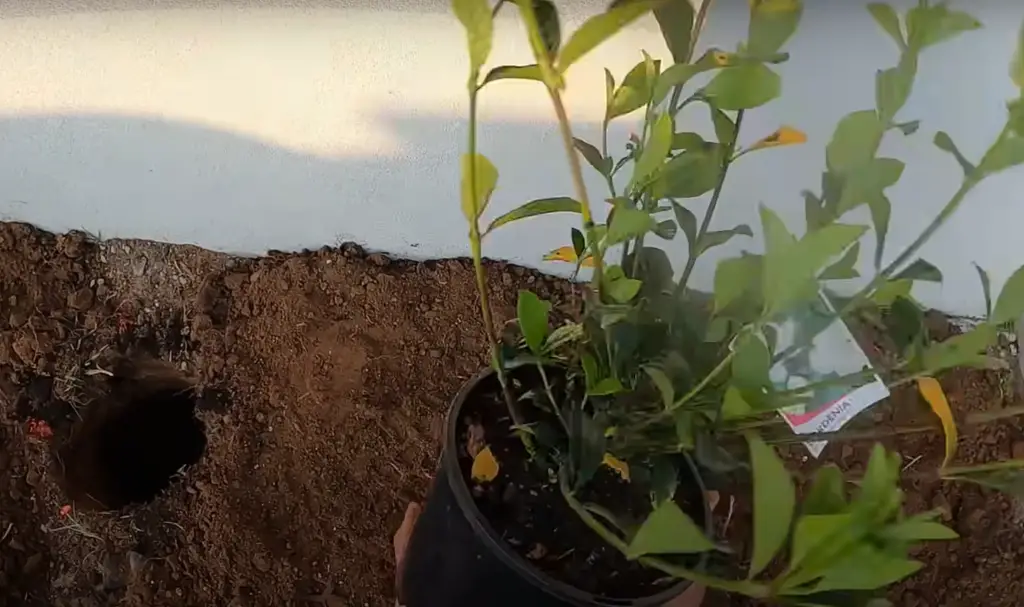
When you’re finished, your description of your garden should give readers a clear sense of what it smells like, sounds like, and looks like.
With these tips in mind, you’ll be well on your way to writing a beautiful description of your favorite place. Happy gardening! [7]Comparison Table: Indicators of Different Gardens
Describing a garden is a delightful task that involves capturing its essence through various indicators. In this comparative analysis, we explore different aspects of gardens and compare them across four categories: Size, Biodiversity, Aesthetics, and Maintenance. The data in the table provides insights into the diversity and beauty of gardens.
| Indicator | Small Garden | Medium Garden | Large Garden |
|---|---|---|---|
| Size (in square feet) | 100-500 | 501-1500 | Above 1500 |
| Biodiversity (number of plant species) | 20-50 | 51-100 | Above 100 |
| Aesthetics (rating out of 10) | 5-7 | 7.5-9 | 9.5-10 |
| Maintenance (hours per week) | 2-5 | 6-10 | Above 10 |
Explanation:
- Size: Gardens are classified based on their area into small (100-500 sq. ft.), medium (501-1500 sq. ft.), and large (above 1500 sq. ft.) categories.
- Biodiversity: The number of plant species in a garden varies, and it can be low (20-50), moderate (51-100), or high (above 100).
- Aesthetics: Gardens are rated on their beauty, with small gardens typically scoring 5-7, medium gardens scoring 7.5-9, and large gardens achieving a near-perfect rating of 9.5-10.
- Maintenance: The time spent on garden upkeep varies; small gardens require 2-5 hours of maintenance per week, medium gardens demand 6-10 hours, while large gardens need more than 10 hours.
Gardens come in various sizes, have diverse flora, and are subject to different levels of maintenance. The aesthetics of a garden often align with its size and maintenance effort, making each type unique and charming in its way. Whether you have a small, medium, or large garden, they all have their distinctive appeal and beauty to be celebrated.
FAQ
What do I say about my yard?
To describe your garden, start by thinking about what kind of mood you want to create. Do you want it to be inviting and cheerful? Serene and calming? Romantic and whimsical? Once you have a general feel for the atmosphere you’re going for, begin brainstorming adjectives that fit that theme.
Some other things to consider when describing your garden:
- The type of plants and flowers you have
- The layout or design
- Any unique features like fountains, bird baths, etc.
- The time of day or year (is it sunny or shaded? Is the grass green or brown?)
- How well maintained it is
With all of these elements in mind, start writing! A few sentences is all you need to set the scene and give your readers a sense of what your garden looks and feels like.
What would you say a flourishing garden is?
Is it a place where colorful flowers bloom and bees buzz? Is it a neat row of vegetables, or a wild tangle of roses?
Gardens are as diverse as the people who tend them. But whether you have a green thumb or not, everyone can appreciate a beautiful garden.
First, think about what kind of garden you have. This will help determine the style of your description. A formal garden with straight lines and clipped hedges will be described differently than an English cottage garden with winding paths and overgrown flowers.
Next, consider the senses. What does the garden look like? What does it smell like? Are there any sounds?
Is it a peaceful oasis or a riot of color and activity? How does it make you feel?
All of these details will help create a vivid picture for your reader.
Finally, don’t forget to describe the gardener! A well-tended garden is a reflection of the person who tends it.
Include some details about their personality and what they’ve created.
What do you term an English garden?
It is a mix of the wild and the cultivated, with an underlying orderliness. That might be one way to describe it. But every gardener will have his or her own take on what defines an English garden.
In Jane Austen’s “Pride and Prejudice,” Mr. Darcy describes his estate, Pemberley, as follows: “It was a large, handsome, stone building standing well on rising ground, and backed by a hill… .” If you were to ask Elizabeth Bennet what she thought of Mr. Darcy’s home after visiting it for the first time, she would probably say something quite different than he does. And that is as it should be.
The same can be said of any garden, large or small. It is the gardener’s perspective that counts.
How would you describe a stunning plant to someone who has never seen one?
You could say it is a thing of beauty, or that it takes your breath away.
But if you want to be more specific, you might say it is an “African daisy with striking yellow petals and a deep red center.”
Now that is a description that will give your reader a good idea of what the plant looks like.
When writing about your garden, try to describe it as if you were showing it to someone who has never seen it before.
What are its most distinguishing features? What makes it special to you?
By sharing your own perspective, you will give your readers a glimpse into the world of gardening through your eyes. And that is what makes for great garden writing.
What are describing words?
They are adjectives that help give your writing more detail. When you describe a garden, try to use as many of the five senses as possible. What does it look like? What colors do you see? What does it smell like? Is there a particular taste associated with the garden, such as the sweetness of ripe fruit or herbs? And finally, what does it sound like? Is there a fountain or stream bubbling in the background, or perhaps birds singing in the trees?
By using all of these senses, you can create a vivid and detailed picture for your reader that will transport them into your own personal outdoor oasis.
How do I start describing a garden?
To start describing a garden, take a moment to observe and note down its overall appearance, the types of plants present, the color scheme, and any unique features that stand out to you.
What are some adjectives to describe a garden’s appearance?
Some adjectives to describe a garden’s appearance could be lush, vibrant, well-maintained, manicured, wild, enchanting, tranquil, or inviting.
How can I describe the plant diversity in a garden?
You can describe the plant diversity in a garden by mentioning the various types of flowers, shrubs, trees, herbs, and other greenery present, highlighting their different colors, shapes, and sizes.
What elements can I mention when describing the layout of a garden?
When describing the layout of a garden, you can mention pathways, borders, garden beds, sculptures, fountains, seating areas, and the arrangement of different plant groups.
How do I describe the scents in a garden?
To describe the scents in a garden, pay attention to the fragrance of different flowers and plants, and use adjectives like sweet, aromatic, refreshing, or intoxicating to capture the sensory experience.
What kind of wildlife can be mentioned while describing a garden?
While describing a garden, you can mention the presence of butterflies, bees, birds, ladybugs, and other insects that are attracted to the flowers and contribute to the garden’s ecosystem.
How can I portray the atmosphere of a garden through words?
To portray the atmosphere of a garden, use words like serene, peaceful, lively, harmonious, joyful, or magical to convey the feelings and emotions it evokes.
What aspects can I focus on when describing the colors in a garden?
When describing the colors in a garden, focus on the dominant color scheme, contrasting hues, and the way colors change with the seasons, using terms like vibrant, pastel, earthy, or bold.
How can I describe the maintenance level of a garden?
To describe the maintenance level of a garden, mention if it appears well-tended, neatly arranged, and carefully pruned, or if it has a more natural, untamed look with minimal intervention.
What are some phrases to describe the overall ambiance of a garden?
Some phrases to describe the overall ambiance of a garden include “a haven of tranquility,” “a burst of colors and life,” “a symphony of nature,” “a delightful sensory experience,” or “a slice of paradise.”
Useful Video: How to make a garden bed edging – Easy DIY
Final Words
No matter what type of garden you have, these tips will help you describe it in a way that does justice to its natural beauty. With a little practice, you’ll be able to capture the magic of your outdoor space in words. So get writing and enjoy the process of exploring your favorite place in new ways. Thanks for reading!
Do you have any other tips for how to describe a garden? Share them in the comments below! And if you enjoyed this post, please share it with your fellow gardening enthusiasts. Happy writing!
References:
- https://www.dictionary.com/browse/gardens
- https://symbolism.fandom.com/wiki/Garden
- https://www.exoticgardening.com/describing-the-garden/
- https://achievethecore.org/content/upload/Juicy%20Sentence%20Guidance.pdf
- https://describingwords.io/for/garden
- https://madisonessentials.com/Article/2017-05/Scent-Garden
- https://themicrogardener.com/ten-tips-for-creating-beautiful-gardens/








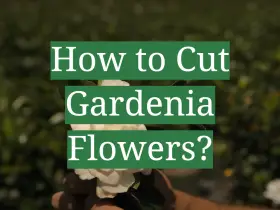
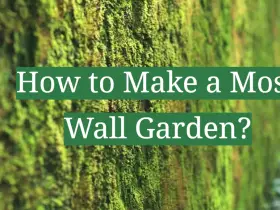
My garden is a place of refuge. It’s a place where I can go to escape the hustle and bustle of the outside world. It’s a place where I can relax and let my mind wander.
My garden is filled with all sorts of different plants and flowers. There are colorful roses, tranquil waterfalls, and fragrant herbs. Each plant has its own unique story to tell.
I love spending time in my garden. It’s a place where I can connect with nature and find peace and solace.
When I think of gardens, I think of peace. I think of a place where I can go to relax, to escape from the hustle and bustle of the real world. There’s something about the sight and smell of flowers that just calms me down.
To describe my garden, I would have to start with the flowers. I have a variety of different flowers, ranging from roses to lilies to sunflowers. Each one has a special meaning to me, and they all make my garden look beautiful.
I would also have to mention my garden’s centerpiece: my large oak tree. The tree provides shade on hot days and a place for me to sit and relax. It’s also a great place to hang a hammock or swing!
Lastly, I can’t forget to mention my garden’s furry inhabitants. I have a few squirrels that love to play in the trees, and a bunny that comes by every morning for breakfast. I always enjoy watching them interact with each other and with my plants.
To me, my garden is a place of peace and happiness. It’s my little slice of heaven on Earth.
When I was younger, my mom would always take me to the garden. It was one of my favorite places to be. The garden was so peaceful and calming. It was the perfect place to escape from the world.
The garden was filled with all sorts of plants and flowers. There were rows and rows of beautiful blooms. The colors were so bright and vibrant. It was like a rainbow had exploded in the garden.
The garden also had a lot of trees. The trees provided shade and protection from the sun. They were also a great place to sit and relax.
I loved spending time in the garden. It was a wonderful place to escape from reality.
There are so many words to describe a garden, it’s hard to know where to start! Perhaps the best way to explain it is through personal experience.
For me, a garden is a place of peace and tranquility. It’s a refuge from the busy world outside, a place where I can relax and enjoy nature. I love the sound of birds singing, the rustling of leaves in the wind, and the soft splash of water from a fountain.
A garden is also a place of beauty and wonder. I never get tired of looking at the colors and shapes of the flowers, or watching the butterflies and bees flitting around. Every time I visit my garden, I discover something new that delights me.
Ultimately, a garden is a source of happiness for me. Whenever I’m feeling down, spending time in my garden always lifts my mood. There’s just something about being surrounded by nature that makes me feel good inside and out.
A garden is a beautiful place. It’s a place where you can relax and enjoy the fresh air. Gardens are full of plants, flowers, and trees. They can be big or small, but they all have something special about them.
When I think of gardens, I think of adjectives like peaceful, calming, and serene. A garden is a great place to get away from the hustle and bustle of the world. It’s a place where you can take a deep breath and relax.
My garden is a place of refuge. A place to escape the hustle and bustle of the outside world. It’s a place where I can go to connect with nature and find solace.
The garden is a large space, and it’s filled with all sorts of different plants and trees. There are flowers, bushes, and vines galore. And there are also several different types of trees, including a big oak tree that provides shade in the summertime.
One of my favorite things to do is just wander around in the garden and take in all the sights and smells. Every time I visit, I notice something new. The colors are always so vibrant, and the fragrances are always so soothing. It’s truly a wonderful place to relax and rejuvenate.
A personal story on adjectives for garden:
I have a beautiful garden that I take great pride in. Every season, it seems to change and evolve into something new and wonderful. The flowers are always blooming, the trees are always leafy, and the grass is always green. It’s truly a sight to behold.
I love spending time in my garden, and I often find myself lost in thought as I sit on my porch and watch the world go by. It’s the perfect place to relax and escape the hustle and bustle of everyday life. The only problem is that it’s sometimes hard to describe just how beautiful it is.
There are so many adjectives that could be used to describe my garden, but “charming” probably sums it up best. It’s definitely a place where you can lose yourself in beauty and peace. Thank you, garden, for always bringing a smile to my face.
I remember the first time I ever saw a garden. It was a warm, sunny day and my family and I were on a road trip. We were driving through some small town in California and we saw this amazing garden in the middle of the town. It was so beautiful! The flowers were so colorful and the gardens were so well-maintained. I was so amazed by it and I wished that we could go explore it.
Since then, I’ve grown to love gardens. I love the way they smell, I love the way they look, and I love the way they make me feel. There’s just something about them that’s so special. Whenever I see a garden, it makes me feel happy and calm. It’s like a little piece of heaven on earth.
I’ve visited lots of gardens over the years, but my favorite one is still the one in that small town in California. It’s just so beautiful and perfect in every way. If you ever have a chance to visit it, I highly recommend it!
There are so many ways to describe a garden, it’s hard to know where to start! A garden can be a place of beauty and peace, a haven from the outside world. It can be a place to relax and reconnect with nature, to breathe in fresh air and feel the sun on your face.
A garden can also be a place of productivity, a space where you can grow your own food and herbs. It can be a source of joy and satisfaction, as you watch your plants flourish and thrive. A garden can be a wonderful addition to any home, providing color and life in all seasons.
For me, the best way to describe a garden is as a place of growth. It’s a place where you can see new life emerging every day, as plants grow and blossoms open up. It’s a reminder that even in the midst of chaos and uncertainty, there is always something beautiful waiting to be discovered.
I have always loved spending time in gardens. There is something so serene and calming about being surrounded by plants and flowers. I remember one particular garden that I used to visit often. It was called the Secret Garden, and it was located in the heart of the city.
The garden was a quiet oasis in the middle of the hustle and bustle of the city. It was full of beautiful blooming flowers, tranquil ponds, and swaying trees. The garden was a wonderful place to relax and escape from the noise and chaos of the city.
I would often come to the garden to read a book or take a nap. The soft breeze and natural beauty of the garden always managed to calm and relax me. I will never forget the peace I felt whenever I visited that garden.
When I was younger, my parents had a garden. It was always so much fun to go outside and explore all the different plants and flowers. There were so many different colors and scents, it was like walking into a rainbow or a cloud of perfume.
Even now, as an adult, I enjoy visiting gardens. It’s so peaceful to relax on a bench surrounded by beautiful greenery and listen to the birds singing. Gardening is definitely therapeutic for me; it’s like taking a break from the world to focus on something simple and calming.
I don’t have my own garden yet, but I’m hoping to get one someday. I can’t wait to experience that same sense of peace and tranquility that I get from visiting other gardens.
My grandparents always had a garden. It was something I loved to visit every summer when I would go and stay with them. There was always something new to see in their garden, and it was such a relaxing place to be.
One of my favorite things to do was sit on the porch and watch my grandfather work in the garden. He had such a calm demeanor, and I loved watching him tend to his plants. He would tell me all about the different kinds of plants he was growing, and how to take care of them.
I still remember the smell of the flowers in my grandparents’ garden, and how peaceful it felt to be there. Even now, whenever I see a garden, it takes me back to those childhood memories. Gardens are a wonderful way to connect with nature, and I hope that everyone has a chance to experience one someday.
I was recently tasked with the challenge of describing my grandmother’s garden for an insurance assessment. Trying to cram the beauty and serenity of that space into words was daunting, but I found myself eagerly losing myself in the task.
The garden is tucked away at the back of her property, surrounded by a tall fence that shields it from view of the street. Stepping through the gate, you’re enveloped in a world of green. The garden is bursting with life – from the bright flowers that dot the landscape to the vegetables and herbs that grow in tidy rows.
My grandmother has spent years cultivating this garden, and it shows. The plants are well-manicured and healthy, with a sense of purpose about them. There’s a bench in the corner where you can sit and take it all in, and I often find myself doing just that.
Describing a garden is tricky – it’s a space that’s meant to be experienced, not just looked at. But I’ll do my best to capture it in words. The garden is a place of peace and calm, a refuge from the chaos of the outside world. It’s a place where you can slow down and breathe, connect with nature, and simply be.
I have always loved gardens. They are so peaceful and calming, and there’s nothing quite like walking through a garden on a spring day. The flowers are in bloom, the trees are leafy, and the birds are singing. It’s like a little piece of Heaven on Earth.
There are so many words that I could use to describe a garden, but some of my favorites include “serene,” “peaceful,” “tranquil,” and “idyllic.” A garden is the perfect place to relax and forget about the stresses of everyday life. It’s a place where you can slow down and enjoy the simple things in life.
I have spent many hours sitting in gardens, just watching the world go by. I find it so refreshing to take a break from the noise and chaos of the world and spend some time in nature. Gardens are a wonderful way to connect with the natural world, and I think everyone should experience that peace and tranquility at least once in their lives.
Neat gardens are a joy to behold. The carefully trimmed grass and perfectly placed plants create an orderly oasis in the midst of the chaos of everyday life. Adjectives that come to mind to describe a neat garden include pristine, tidy, and well-manicured.
I remember the first time I saw my grandmother’s garden. It was a warm summer day and the sun was shining brightly. The flowers were in bloom and the grass was freshly mowed. It was the most beautiful sight I had ever seen. My grandmother took great pride in her garden and she worked hard to keep it neat and tidy. She would spend hours weeding and watering her plants, and she would always have a smile on her face when she was out there working.
I can still picture that garden in my mind, and it always brings a smile to my face. It was a true haven of peace and tranquility in the middle of a busy city. My grandmother has since passed away, but I know that her spirit still resides in that garden. It’s a place where I can go to find solace and peace, and it will always be close to my heart.
There’s something about gardens that just makes people happy. Maybe it’s the colors, the scents, or the sounds of running water. For me, it’s all of those things and more. I could spend hours just wandering around my garden, taking in all the beauty.
There’s a little pond in the center of my garden, and it’s always full of beautiful fish. I love to sit on the bench near the pond and watch them swim around. The flowers around the pond are always in bloom, and their fragrance fills the air. I can sit there for hours and relax, listening to the water bubbling gently.
The rest of my garden is just as beautiful. There are rows of vibrant flowers, tall trees, and a babbling brook. It’s like a little slice of paradise right in my backyard. Every time I step into my garden, I feel like I’m transported to another world. It’s definitely my favorite place to be!
The garden I see before me is a symphony of color and fragrance. The soft morning light bathes the petals in a gentle glow, making them shimmer and dance. A sweet breeze caresses my face, bringing the delicate aroma of the flowers to my nose.
I can see tulips in shades of pink and red, their petals curling inward like dancers en pointe. There are also daffodils, with their trumpets nodding in the breeze, and hyacinths, their spikes of blue towering above all the others. In the background I see roses, their petals a deep red, and ivy crawling up the fence.
It’s such a peaceful scene, and I can’t help but feel calm looking at it. The garden seems to be a place of refuge, a haven from the busy world outside. I could sit here for hours, just watching the flowers sway in the breeze and listening to the birds sing.
I was always fascinated by gardens. I would admire their beauty and how they were so neatly maintained. I remember the first garden that I ever saw. It was my great-grandmother’s garden. It was huge and it had every kind of flower you could imagine. There were also vegetables and fruits growing in the garden. It was really something to see.
Ever since then, I’ve loved gardens and have always wanted one of my own. When I finally moved into my own house, I made sure to have a garden. It wasn’t as big as my great-grandmother’s, but it was perfect for me. I planted all kinds of flowers and vegetables in my garden. I loved spending time in it, watching the plants grow.
I still enjoy visiting gardens, but there’s nothing like coming home to my own garden after a long day at work. It’s such a relaxing and peaceful place for me to be.
A garden is a beautiful thing. It’s a place where you can go to escape the hustle and bustle of the world. When I enter my garden, I am surrounded by peace and tranquility.
The plants in my garden are all different heights, colors, and textures. The flowers are so brightly colored, they almost look fake. The leaves on the trees rustle in the wind, providing a soothing background noise. The sun is shining down on me, warming my skin.
The smell of the flowers is intoxicating. It’s like a mix of perfume and fresh air. The dirt is soft beneath my feet, and the grass is cool and refreshing.
It’s such a peaceful place, and it’s always a joy to spend time in my garden.
Describing a garden can be tricky because there are so many different types! I think the best way to do it is to start with the basics. Gardens can be either outdoor or indoor, and they can be made up of a variety of plants, flowers, and trees.
When describing an outdoor garden, you might want to start by talking about the climate or scenery. Is it warm and sunny, or cool and shady? Is the garden located in the middle of a busy city, or is it out in the country? Once you’ve described the surroundings, you can move on to the plants themselves. What kind of flowers and trees are growing in the garden? Are they all blooming, or just starting to bud?
If you’re describing an indoor garden, you might want to start by talking about the type of plants that are used. Are they all succulents, or are there flowers and trees too? How big is the garden? Is it just a few small pots on a windowsill, or is it a large room filled with plants? Finally, you might want to talk about the feeling or mood that the garden creates. Is it calming and peaceful, or is it bright and cheerful?